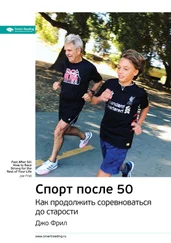Simon, J. et al. Plasma Lactate and Ventilation Thresholds in Trained and Untrained Cyclists // Journal of Applied Physiology 60 (1986): 777–781.
Simonson, J. C. et al. Dietary Carbohydrate, Muscle Glycogen, and Power Output during Rowing Training // Journal of Applied Physiology 70 (1991): 1500–1505.
Sleamaker, R., and Browning, R. Serious Training for Serious Athletes . Champaign, IL: Leisure Press, 1996.
Sleivert, G. G., and Rowlands, D. S. Physical and Physiological Factors Associated with Success in the Triathlon // Sports Medicine 22, no. 1 (1996): 8–18.
Sleivert, G. G., and Wenger, H. A. Physiological Predictors of Short-Course Triathlon Performance // Medicine and Science in Sports and Exercise 25, no. 7 (1993): 871–876.
Somer, E. The Essential Guide to Vitamins and Minerals . New York: HarperCollins, 1992.
Speechly, D. P., Taylor, S. R., and Rogers, G. G. Differences in Ultra-Endurance Exercise in Performance-Matched Male and Female Runners // Medicine and Science in Sports and Exercise 28 (1996): 359–365.
Stahl, A. B. Hominid Dietary Selection before Fire // Current Anthropology 25, no. 2 (1984): 151–168.
Steed, J. C. et al. Ratings of Perceived Exertion (RPE) as Markers of Blood Lactate Concentration during Rowing // Medicine and Science in Sports and Exercise 26 (1994): 797–803.
Steinacker, J. M. et al. Training of Rowers before World Championships // Medicine and Science in Sports and Exercise 30, no. 7 (1998): 1158–1163.
Stone, M. et al. Overtraining: A Review of the Signs, Symptoms, and Possible Causes // Journal of Applied Sport Sciences 5, no. 1 (1991): 35–50.
Stone, M. H. et al. Health– and Performance-Related Potential of Resistance Training // Sports Medicine 11, no. 4 (1991): 210–231.
Svedenhag, J., and Sjodin, B. Physiological Characteristics of Elite Male Runners In– and Off-Season // Canadian Journal of Applied Sport Sciences 10, no. 3 (1985): 127–133.
Taimura, A., Sugahara, M. Effect of Fluid Intake on Performance, Body Temperature, and Body Weight Loss during Swimming Training // Medicine and Science in Sport and Exercise 28, no. 5 (1996): S940.
Thomas, D. Q. et al. Changes in Running Economy and Mechanics during a Submaximal 5-Km Run // Journal of Strength and Conditioning Research 9, no. 3 (1995): 170–175.
Thompson, P. D. et al. The Effects of High-Carbohydrate and High-Fat Diets on the Serum Lipid and Lipoprotein Concentrations of Endurance Athletes // Metabolism 33 (1984): 1003–1010.
Thorland, W. G. et al. Strength and Anaerobic Responses of Elite Young Female Sprint and Distance Runners // Medicine and Science in Sports and Exercise 19: 56–61.
Tipton, C. M. et al. The Influence of Physical Activity on Ligaments and Tendons // Medicine and Science in Sports and Exercise 7 (1975): 165–175.
Toussaint, H. M. Differences in Propelling Efficiency between Competitive and Triathlon Swimmers // Medicine and Science in Sports and Exercise 22, no. 3 (1990): 409–415.
Toussaint, H. M., and Hollander, A. P. Energetics of Competitive Swimming: Implications for Training Programs // Sports Medicine 18 (1994): 384.
Toussaint, H. M. et al. Effect of Triathlon Wetsuit on Drag during Swimming // Medicine and Science in Sports and Exercise 21 (1989): 325.
Town, G., and Kearney, T. Swim, Bike, Run. Champaign, IL: Human Kinetics, 1994.
Triathlon: Achieving Your Personal Best / ed. R. Cedaro. New York: Facts on File, 1993.
Ungerleider, S. Mental Training for Peak Performance . Emmaus, PA: Rodale Sports, 1996.
Urhausen, A. et al. Blood Hormones as Markers of Training Stress and Overtraining // Sports Medicine 20 (1995): 251–276.
Vanderburgh, H., and Kaufman, S. Stretch and Skeletal Myotube Growth: What Is the Physical to Biochemical Linkage? // Frontiers of Exercise Biology / ed. K. Borer et al. Champaign, IL: Human Kinetics, 1983.
VanHandel, P. J. Planning a Comprehensive Training Program // Conditioning for Cycling 1, no. 3 (1991): 4–12.
VanHandel, P. J. The Science of Sport Training for Cycling, Part I // Conditioning for Cycling 1 , no. 1 (1991): 8–11.
VanHandel, P. J. The Science of Sport Training for Cycling, Part II // Conditioning for Cycling 1 , no. 2 (1991): 18–23.
VanHandel, P. J. Specificity of Training: Establishing Pace, Frequency, and Duration of Training Sessions // Bike Tech 6, no. 3 (1987): 6–12.
Vanzyl, C. G. et al. Effects of Medium-Chain Triglycerides Ingestion on Fuel Metabolism and Cycling Performance // Journal of Applied Physiology 80, no. 6 (1996): 2217–2225.
Venkatraman, J. T. et al. Influence of the Level of Dietary Lipid Intake and Maximal Exercise on the Immune Status in Runners // Medicine and Science in Sport and Exercise 29, no. 3 (1997): 333–344.
Vogt, M. et al. Effects of Dietary Fat on Muscle Substrates, Metabolism, and Performance in Athletes // Medicine and Science in Sports and Exercise 35, no. 6 (2003): 952–960.
Wakayoshi, K. et al. Does Critical Swimming Velocity Represent Exercise Intensity at Maximal Lactate Steady State? // Medicine and Science in Sports and Exercise 25, no. 5 (1993): S366.
Wallin, D. et al. Improvement of Muscle Flexibility: A Comparison between Two Techniques // The American Journal of Sports Medicine 13, no. 4 (1985): 263–268.
Walsh, R. M. et al. Impaired High-Intensity Cycling Performance Time at Low Levels of Dehydration // International Journal of Sports Medicine 15 (1994): 392–398.
Wells, C. L. Women, Sport, and Performance: A Physiological Perspective . Champaign, IL: Human Kinetics, 1991.
Weltman, A. The Blood Lactate Response to Exercise . Champaign, IL: Human Kinetics, 1995.
Weltman, A. et al. The Effects of Hydraulic Resistance Strength Training in Pre-Pubertal Males // Medicine and Science in Sports and Exercise 18 (1986): 629–638.
Weltman, A. et al. Endurance Training Amplifies the Pulsatile Release of Growth Hormone: Effects of Training Intensity // Journal of Applied Physiology 72 (1992): 2188.
Wemple, R. D. et al. Caffeine vs. Caffeine-Free Sports Drinks: Effects on Urine Production at Rest and during Prolonged Exercise // International Journal of Sports Medicine 18 (1997): 40–46.
Weston, A. R. et al. Skeletal Muscle Buffering Capacity and Endurance Performance after High-Intensity Interval Training by Well-Trained Cyclists // European Journal of Applied Physiology 75 (1997): 7–13.
Williams, K. R. Relationship between Distance Running Biomechanics and Running Economy» // Biomechanics of Distance Running / ed. P. R. Cavanagh. Champaign, IL: Human Kinetics, 1990.
Williams, W. Ergogenics Edge . Champaign, IL: Human Kinetics, 1994.
Wilmore, J., and Costill, D. Physiology of Sport and Exercise . Champaign, IL: Human Kinetics, 1994.
Wilmore, J. et al. Is There Energy Conservation in Amenorrheic Compared with Eumenorrheic Distance Runners? // Journal of Applied Physiology 72 (1992): 15–22.
Women and Exercise: Physiology and Sports Medicine / ed. M. M. Shangold, and G. Mirkin. Philadelphia: F. A. Davis, 1988.
Zatsiorsky, V. M. Science and the Practice of Strength Training . Champaign, IL: Human Kinetics, 1995.
Я многим обязан триатлетам, прочитавшим предыдущие издания книги The Triathlete’s Training Bible и поделившимся со мной идеями о том, как сделать ее еще более полезной. Многие изменения и добавления, включенные в это издание, появились благодаря моим читателям.
Читать дальше
Конец ознакомительного отрывка
Купить книгу

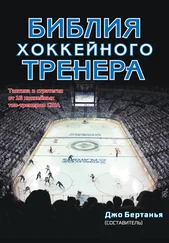
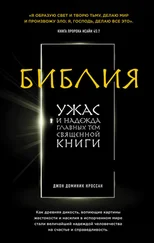
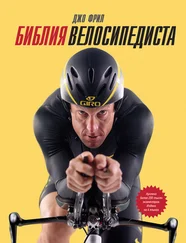





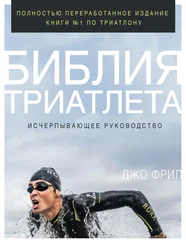
![Библия - Библия [Учебное издание]](/books/433190/bibliya-bibliya-uchebnoe-izdanie-thumb.webp)
